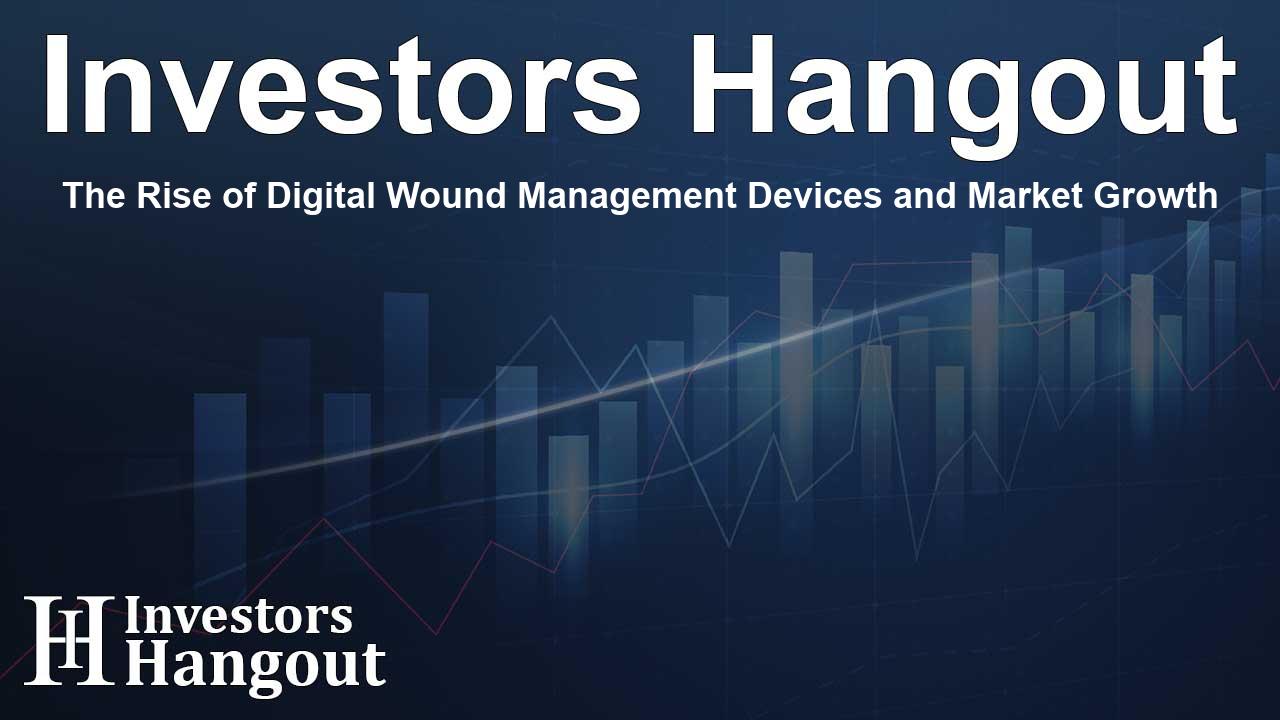The Rise of Digital Wound Management Devices and Market Growth

Understanding the Digital Wound Management Devices Market
The global Digital Wound Management Devices Market has demonstrated significant growth and is projected to reach USD 3,594.49 million by 2032, representing a compound annual growth rate (CAGR) of 5.03% from its 2024 valuation of USD 2,415.89 million. This growth trajectory is heavily influenced by the rising need for innovative technologies that improve wound care efficiency and patient outcomes. Embracing tools like imaging devices, sensors, and software, digital wound management is transforming how healthcare professionals monitor and manage both chronic and acute wounds.
Key Drivers of Market Growth
Increasing Chronic Wound Incidences
The surge in global chronic conditions such as diabetes and obesity is leading to a higher incidence of chronic wounds, including diabetic foot ulcers and pressure ulcers. These conditions demand continuous care and monitoring, thus propelling the market for digital wound care solutions that provide immediate data and improve clinical decision-making.
Technological Innovations in Wound Care
Advancements in digital health technologies, especially artificial intelligence (AI) and cloud computing, are reshaping wound care practices. Digital wound management devices equipped with smart sensors and mobile applications can effectively assess wound healing and suggest appropriate treatments, facilitating personalized care management and driving market expansion.
Shift Towards Telehealth and Remote Monitoring
The growing adoption of telehealth, particularly following the pandemic, underscores the changing landscape of wound care. Healthcare providers are increasingly employing digital platforms and mobile apps to monitor patients remotely, which not only enhances accessibility but also alleviates the pressure on healthcare systems.
Healthcare Digitization Trends
The global push for digitization within healthcare systems has spurred the adoption of digital wound management solutions. These technologies streamline clinical workflows, minimize manual documentation, and promote efficiency. Furthermore, cost-effective solutions are becoming highly sought after by healthcare providers.
Challenges Affecting Market Growth
High Costs of Advanced Technologies
While the benefits of digital wound management devices are clear, the high costs associated with cutting-edge technologies can hinder adoption, especially in resource-limited settings. Access to advanced tools remains a significant barrier, necessitating greater financial investment from healthcare facilities.
Training Gaps and Implementation Hurdles
Integrating advanced digital solutions into existing healthcare practices demands thorough training for users. Resistance to change among healthcare professionals due to unfamiliarity with these technologies may slow down their implementation, affecting the overall market adoption rate.
Regulatory Hurdles
Navigating the complex regulatory environment can pose challenges for new digital wound management devices. The need for extensive approval processes can delay product launches, potentially discouraging investments in this innovative sector.
Infrastructure Limitations
In emerging markets, insufficient healthcare infrastructure often stands in the way of widespread adoption of digital wound management technologies. Issues such as unreliable internet connectivity and limited access to electronic health records are critical barriers that need to be addressed.
Regional Insights
North America: The Leader in Digital Wound Management
North America emerges as the largest market for digital wound management solutions, benefiting from advanced healthcare facilities, high medical technology expenditure, and early adoption of digital innovations. The focus on integrated wound care solutions and the implementation of AI-driven platforms highlights the region's commitment to enhancing patient care.
Europe's Growing Market
As the second-largest market, Europe is witnessing increased adoption of digital wound care technologies, driven by an aging population. Countries like Germany and France lead in this transition, supported by government initiatives aimed at promoting digital healthcare practices and improving patient care.
Rapid Growth in the Asia-Pacific Region
The Asia-Pacific region is expected to exhibit rapid growth, fueled by the increasing elderly population and rising healthcare expenditures. Countries such as India and China are making significant investments in digital health, opening new avenues for manufacturers. However, disparities in regional infrastructures remain a challenge.
Competitive Landscape
The Digital Wound Management Devices Market is a moderately consolidated space characterized by a blend of established medical device companies and emerging digital health startups. Competitive strategies focus on technological advancements, product differentiation, and strategic collaborations to enhance patient outcomes and operational efficiencies.
To maintain market leadership, companies are investing in research and integrating AI technologies to enrich their product offerings. In addition to traditional players, agile businesses are innovating to provide specialized digital wound care solutions tailored to specific patient needs.
Frequently Asked Questions
What is driving the growth of the digital wound management market?
The growth is primarily driven by the rise in chronic wound cases, advancements in digital health technologies, and the increasing adoption of telehealth solutions.
What are the main challenges in the digital wound management market?
High costs of technology, training requirements, regulatory hurdles, and infrastructure limitations in emerging markets are some of the main challenges faced.
Which regions are leading in the adoption of digital wound management solutions?
North America is the leading region, followed by Europe, with rapid growth witnessed in the Asia-Pacific region.
How do technological innovations impact wound care?
Technological innovations improve wound assessment accuracy, enhance treatment personalization, and facilitate remote patient monitoring, leading to better patient outcomes.
Who are the key players in the digital wound management space?
Key players include Healogics, LLC., Smith+Nephew, and 3M, among others. These companies focus on developing advanced solutions to enhance the wound management process.
About The Author
Contact Ryan Hughes privately here. Or send an email with ATTN: Ryan Hughes as the subject to contact@investorshangout.com.
About Investors Hangout
Investors Hangout is a leading online stock forum for financial discussion and learning, offering a wide range of free tools and resources. It draws in traders of all levels, who exchange market knowledge, investigate trading tactics, and keep an eye on industry developments in real time. Featuring financial articles, stock message boards, quotes, charts, company profiles, and live news updates. Through cooperative learning and a wealth of informational resources, it helps users from novices creating their first portfolios to experts honing their techniques. Join Investors Hangout today: https://investorshangout.com/
The content of this article is based on factual, publicly available information and does not represent legal, financial, or investment advice. Investors Hangout does not offer financial advice, and the author is not a licensed financial advisor. Consult a qualified advisor before making any financial or investment decisions based on this article. This article should not be considered advice to purchase, sell, or hold any securities or other investments. If any of the material provided here is inaccurate, please contact us for corrections.
